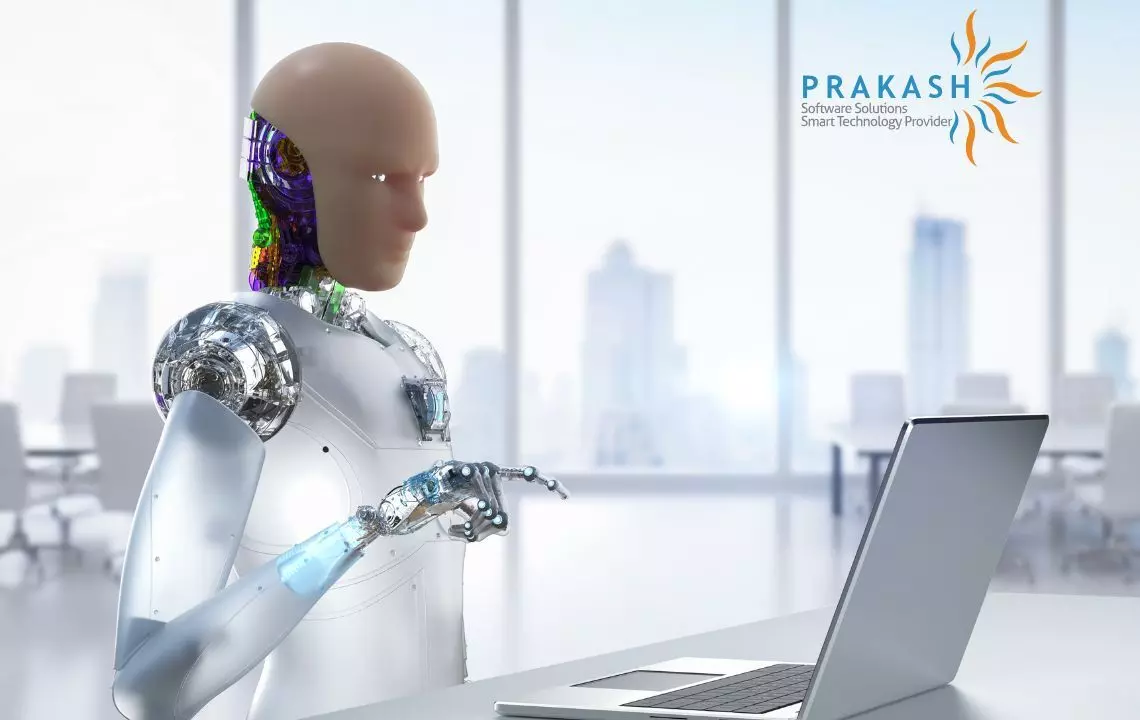How Artificial Intelligence Is Shaping the Future of Business?
image for illustrative purpose

The past five years have witnessed an increase in the uptake of Artificial Intelligence (AI). Whereas the old automation brought in efficiency, new AI promises revolutionary benefits--such as management of global supply chains and enabling novel business models that are based on data.
Along with such capabilities, there are technical issues. Companies find it hard to scale AI because of the outdated systems of infrastructure, poorly connected data systems, and non-integration.
Companies need to invest in their strategy to unleash the potential of AI, and not only technology. Working with a suitable provider of AI development services or generative AI is the key to piloting programs staying at a dead end and changing to AI taking place.
The following are five fundamental use cases of AI in 2025 and how businesses will have to act to scale those advantages:
1. Intelligently using Automated Manual Processes
Artificial intelligence is reinventing automation. Robotic Process Automation (RPA), on the one hand, is focused on processing structured, rule-based activities, whereas AI introduces intelligence into a task, processing unstructured data, learning the results, and adjusting a workflow on the fly.
Banking and other corporations are automating jobs at a high level, such as:
Sentiment analysis in support emails
Acceptance of invoices of various types
Processing primary cases analysis
Services such as the AI Builder offered by Microsoft Power Automate also assist companies in working with generative AI to build customizable outsourced solutions to scale.
Smart automation does require some planning, however, particularly regarding management of AI models, and scalable computing and storage space. One company at the forefront of this transformation is Prakash Software Solutions Pvt Ltd, a leading AI app development company.
They specialize in building custom AI solutions that help businesses automate workflows, personalize user experiences, and unlock valuable insights from data—making them a trusted partner for enterprises embracing AI-driven growth.
2. Predictive Precision in Optimization of Complex Systems
Using AI, it is possible to streamline decision-making in such spheres as:
Fleet and logistics planning
Scheduling of the production lines
Routing of a customer service
As an illustration, DeepMind was used by Google to increase the value of wind power energy by 20 percent using predictive analytics. On the same note, at the manufacturing plants, AI-based scheduling has reduced yield losses by as much as 40%.
In order to establish such systems, organizations need to:
Provide safe real-time access to various sources of data (IoT, ERP, weather, and the like)
Embrace low-latency hybrid clouds
Balance speed, scalability, and control between the public and the privately owned cloud infrastructure
Here is where AI development services enter into play- they will create solutions that fit into your environment and amplify performance.
3. Encontacting Blistering Distraction in Product Design
Artificial intelligence speeds up product and design optimization, providing powerful innovations to many industries, including apparel and aerospace. Next-gen generative AI tools multiply creative freedom, building off recursive feedback to iterate at a rate faster than a human could iterate.
For example, the Azure Cognitive Services can be used to quickly test prices, the configuration of products, or search optimization. The tools, which are supported by the strong infrastructure, enable businesses to prototype smarter and quicker.
In order to do so:
High-performance computing should be invested in
A/B testing and rapid model iteration tools
Encourage the use of combined pipeline testing
With the help of top-notch Generative AI development services, these capabilities will revolutionize the way businesses research, test, and introduce innovations.
4. The expansion in the operational capacity.
AI also allows expanding operational capacity by automating the process of planning and predicting resource demand to provide the most efficient recommendations and lower costs, and maximize production. It tracks compute utilization, recommends the most cost-effective settings, and even spins instances in cloud environments up and down according to demand.
The next step in AI will be proactive planning. Proactive planning will be a major way by which AI becomes future-forward. Proactive planning will manifest itself through early indicators such as inventory irregularities or employee resignations before they become bottlenecks. Modern enterprises grow with the help of this type of adaptive intelligence.
Think of applications such as generative AI in marketing or the development of tailor-made messages in real-time, depending on the live information about customers. Or utilize predictive maintenance to maintain production lines in an efficient way.
In the presence of the MLOps framework, AI development services assist businesses in monitoring, maintaining, and controlling these developing systems efficiently.
5. Predicting Business Outcomes and Hiring Trends
The prediction ability brings AI close to becoming a business strategy. It is being exploited by HR departments to forecast the risk of retention, training needs, and hiring streamlining. In the meantime, leaders utilize generative models of AI to predict revenues, identify opportunities in the market, and make plans to address changing circumstances.
In order to accomplish the best results:
Develop a single source of feature stores that maintains model inputs precise and current
Automate reviewing models to decrease bias and performance drift
Through collaborative work on the basis of automated AI development services, businesses can transform their approach to data manipulation and introduce models that change along with their increasing complexity.
Conclusion: Think Beyond AI, Build it
Business value of AI is also tangible and currently in an increasing trend, but long-term effective impact is more than tools; it is strategy, strong infrastructure, and skills of experts.
The correct development of the AI can ensure the modernization of systems, data unification, and staying ahead, not merely in terms of AI but in the form of it. Get in touch!

